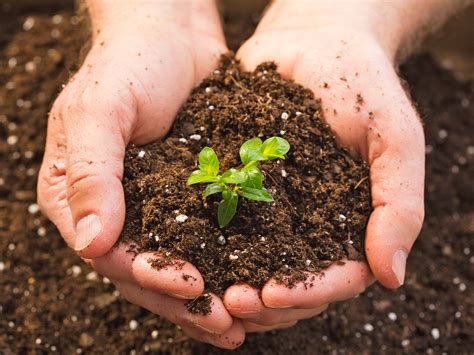
Adding beans to your garden can significantly improve soil health, acting as a natural fertilizer by fixing nitrogen and promoting better plant growth, according to gardening experts. This simple addition can lead to a more sustainable and productive garden.
Beans: The Soil-Boosting Veggie Your Garden Needs
Beans are emerging as a gardener’s secret weapon for enhancing soil health and promoting overall garden productivity. These unassuming legumes possess the remarkable ability to improve soil quality, making them an invaluable addition to any garden, whether you’re a seasoned horticulturalist or a novice enthusiast. The key to their soil-boosting prowess lies in their nitrogen-fixing capabilities, a process that naturally enriches the soil and reduces the need for synthetic fertilizers.
Nitrogen Fixation: A Natural Fertilizer Factory
The most significant benefit of growing beans is their ability to fix nitrogen in the soil. Nitrogen is a crucial nutrient for plant growth, essential for the development of lush foliage and robust stems. Unlike many other plants that rely on nitrogen from external sources such as fertilizers, beans have a symbiotic relationship with certain bacteria called rhizobia, which live in nodules on their roots. These bacteria convert atmospheric nitrogen into a form that plants can readily absorb.
“Beans are nitrogen fixers, which means they can take nitrogen from the air and convert it into a form that plants can use,” explains experts. This natural process effectively fertilizes the soil, providing a sustainable source of nitrogen for the beans themselves and subsequent crops.
How Beans Improve Soil Health
Beyond nitrogen fixation, beans contribute to soil health in several other significant ways:
- Improved Soil Structure: The extensive root systems of bean plants help to break up compacted soil, improving aeration and drainage. This is particularly beneficial in heavy clay soils, where poor drainage can lead to waterlogging and root rot.
- Increased Organic Matter: As bean plants decompose, they add organic matter to the soil, which improves its water-holding capacity and provides a food source for beneficial soil microorganisms.
- Weed Suppression: Bean plants, especially bush varieties, can create a dense canopy that shades the soil and suppresses weed growth. This reduces the need for herbicides and manual weeding, making gardening easier and more sustainable.
- Nutrient Cycling: Bean plants absorb nutrients from the soil and store them in their tissues. When the plants die and decompose, these nutrients are released back into the soil, making them available for other plants.
Choosing the Right Beans for Your Garden
There are numerous varieties of beans to choose from, each with its own unique characteristics and benefits. Some popular options include:
- Bush Beans: These compact plants are ideal for small gardens or containers. They produce beans quickly and require minimal support. Common varieties include Blue Lake Bush, Contender, and Provider.
- Pole Beans: These climbing beans require a trellis or other support structure. They produce beans over a longer period than bush beans and can be more productive in the long run. Popular varieties include Kentucky Wonder, Blue Lake Pole, and Scarlet Runner.
- Dry Beans: These beans are grown specifically for their dried seeds, which are used in soups, stews, and other dishes. Common varieties include Pinto, Black, Kidney, and Navy beans.
No matter which type of bean you choose, be sure to select varieties that are well-suited to your local climate and soil conditions.
Incorporating Beans into Your Garden Plan
To maximize the soil-boosting benefits of beans, consider the following tips:
- Succession Planting: Plant beans in succession throughout the growing season to provide a continuous supply of nitrogen to the soil.
- Cover Cropping: Use beans as a cover crop in the fall to improve soil health over the winter. Till the plants into the soil in the spring to release the stored nitrogen and organic matter.
- Crop Rotation: Rotate beans with other crops that benefit from nitrogen-rich soil, such as leafy greens, tomatoes, and corn.
- Inoculation: Inoculate bean seeds with rhizobia bacteria before planting to ensure effective nitrogen fixation. Inoculants are available at most garden centers.
Companion Planting with Beans
Beans are excellent companion plants for many other vegetables, as they can provide nitrogen and other benefits to their neighbors. Some good companion plants for beans include:
- Corn: Beans provide nitrogen to corn, while corn provides a support structure for pole beans.
- Squash: Beans help to deter squash vine borers, while squash provides shade that helps to suppress weeds.
- Carrots: Beans help to deter carrot rust flies.
- Cucumbers: Beans help to deter cucumber beetles.
- Potatoes: Beans provide nitrogen to potatoes.
- Strawberries: Beans protect strawberries from certain pests.
Avoid planting beans near onions, garlic, and fennel, as these plants can inhibit bean growth.
Sustainable Gardening Practices
Growing beans as a soil-improving crop aligns perfectly with sustainable gardening practices. By naturally fertilizing the soil, beans reduce the need for synthetic fertilizers, which can be harmful to the environment. They also promote biodiversity by attracting beneficial insects and microorganisms to the garden.
“Growing beans is a great way to improve your soil health naturally,” says experts. “It’s a win-win for your garden and the environment.”
Beans also contribute to food security by providing a nutritious and affordable source of protein. They are easy to grow and store, making them an ideal crop for home gardeners and small-scale farmers.
The Environmental Benefits of Bean Cultivation
Beyond the immediate benefits to garden soil, cultivating beans offers broader environmental advantages:
- Reduced Fertilizer Use: As nitrogen fixers, beans diminish the reliance on synthetic nitrogen fertilizers. These fertilizers are energy-intensive to produce and can contribute to water pollution through runoff. Over-application of synthetic fertilizers can also disrupt soil microbial balance, leading to long-term degradation.
- Carbon Sequestration: Bean plants, like all plants, absorb carbon dioxide from the atmosphere during photosynthesis. A portion of this carbon is stored in the plant’s biomass and, more importantly, in the soil as organic matter. By increasing soil organic matter, bean cultivation contributes to carbon sequestration, helping to mitigate climate change.
- Improved Water Quality: Healthy soil, enriched by bean cultivation, acts as a natural filter. It improves water infiltration and reduces runoff, preventing soil erosion and minimizing the transport of pollutants into waterways. This leads to cleaner and healthier aquatic ecosystems.
- Enhanced Biodiversity: Bean cultivation can promote biodiversity by creating habitats for beneficial insects, pollinators, and soil microorganisms. Diverse microbial communities are essential for nutrient cycling, disease suppression, and overall soil health.
- Promotion of Sustainable Agriculture: Integrating beans into crop rotation systems can enhance soil health and reduce the need for chemical inputs. This promotes sustainable agricultural practices that are less harmful to the environment and human health.
Addressing Common Concerns About Bean Cultivation
While beans offer numerous benefits, some gardeners may have concerns about potential challenges associated with their cultivation. Addressing these concerns can help ensure successful bean growing and maximize their positive impact on soil health.
- Pest and Disease Management: Beans are susceptible to various pests and diseases, such as bean beetles, aphids, and fungal infections. However, these issues can be effectively managed through integrated pest management (IPM) strategies. IPM involves using a combination of cultural practices, biological controls, and targeted pesticide applications to minimize pest damage while protecting the environment.
- Soil Preparation: Beans prefer well-drained soil with a slightly acidic to neutral pH. Preparing the soil before planting by adding compost or other organic matter can improve its structure, fertility, and drainage.
- Watering and Irrigation: Beans require consistent moisture, especially during flowering and pod development. However, overwatering can lead to root rot and other problems. It’s important to water beans deeply but infrequently, allowing the soil to dry slightly between waterings.
- Support for Climbing Varieties: Pole beans require a trellis or other support structure to climb. Providing adequate support is essential for maximizing bean production and preventing the plants from becoming tangled and difficult to manage.
- Harvesting and Storage: Beans should be harvested when the pods are plump and the seeds are fully developed. Harvesting beans regularly encourages continued production. Fresh beans can be stored in the refrigerator for several days, while dried beans can be stored in an airtight container for several months.
Expanding on Bean Varieties and Their Specific Benefits
The world of beans is incredibly diverse, with numerous varieties offering unique characteristics and benefits. Understanding these variations can help gardeners choose the best beans for their specific needs and goals.
- Snap Beans (Green Beans): These beans are harvested when the pods are still young and tender. They are a popular choice for fresh eating and are available in both bush and pole varieties. Snap beans are relatively easy to grow and are a good source of vitamins and minerals.
- Shelling Beans: These beans are grown for their mature seeds, which are shelled from the pods before cooking. Shelling beans are often used in soups, stews, and casseroles. They are a good source of protein and fiber.
- Dry Beans: These beans are grown for their dried seeds, which are stored for later use. Dry beans are a staple food in many cultures and are a good source of protein, fiber, and complex carbohydrates.
- Fava Beans (Broad Beans): These beans are unique in that they are typically shelled and eaten fresh, although they can also be dried. Fava beans are a good source of protein, fiber, and iron.
- Soybeans: These beans are primarily grown for oil and animal feed, but they are also used to make tofu, tempeh, and other soy-based products. Soybeans are a good source of protein and essential amino acids.
- Lima Beans: These beans are known for their distinctive flavor and creamy texture. They are available in both bush and pole varieties and are a good source of protein and fiber.
- Adzuki Beans: These small, reddish-brown beans are commonly used in Asian cuisine, particularly in desserts. Adzuki beans are a good source of protein, fiber, and antioxidants.
The Role of Beans in Regenerative Agriculture
The principles of regenerative agriculture focus on enhancing soil health, increasing biodiversity, and reducing reliance on synthetic inputs. Beans play a crucial role in regenerative farming systems due to their nitrogen-fixing abilities, soil-improving qualities, and potential for use as cover crops.
- Nitrogen Fixation in Regenerative Systems: Regenerative agriculture emphasizes the use of natural processes to enhance soil fertility. Beans, as nitrogen fixers, can significantly reduce the need for synthetic nitrogen fertilizers, which are detrimental to soil health and the environment.
- Cover Cropping with Beans: Beans can be used as cover crops to improve soil health during fallow periods. Cover crops protect the soil from erosion, suppress weed growth, and add organic matter to the soil. When beans are used as cover crops, they also contribute nitrogen to the soil, benefiting subsequent crops.
- Crop Rotation with Beans: Rotating beans with other crops can break pest and disease cycles, improve soil structure, and enhance nutrient availability. Beans are often rotated with heavy feeders like corn or vegetables, as they can replenish the soil with nitrogen.
- Reduced Tillage: Regenerative agriculture promotes reduced tillage practices to minimize soil disturbance and preserve soil structure. Beans can be grown in no-till or reduced-till systems, further enhancing their soil-improving benefits.
- Integration with Livestock: In some regenerative farming systems, beans are integrated with livestock grazing. Livestock can graze on bean plants after harvest, further contributing to nutrient cycling and soil health.
FAQ: Frequently Asked Questions About Growing Beans for Soil Health
-
What types of beans are best for improving soil health?
All types of beans contribute to soil health through nitrogen fixation. However, cover crop varieties like fava beans or field peas are particularly effective. Bush beans are easy to manage and suitable for smaller gardens, while pole beans offer extended production. Ultimately, the best choice depends on your local climate, soil type, and gardening goals.
-
How do I inoculate bean seeds with rhizobia bacteria?
Purchase a bean inoculant from a garden center or online supplier. Moisten the bean seeds with water and then mix them with the inoculant powder, following the instructions on the product label. Plant the inoculated seeds immediately. Inoculation is especially important in soils where beans have not been grown before.
-
When is the best time to plant beans for soil improvement?
Beans are typically planted in the spring after the last frost. However, they can also be planted in the summer for a fall harvest. For cover cropping, beans can be planted in the fall to improve soil health over the winter.
-
Can I grow beans in containers for soil improvement?
Yes, bush beans are well-suited for container gardening. Use a large container with well-draining potting mix and provide adequate sunlight and water. While the soil improvement will be localized to the container, it can still benefit the plants grown in it.
-
How do I incorporate bean plants into the soil after harvesting?
After harvesting the beans, cut the plants at the soil level and leave the roots in the ground. The roots will decompose and release nitrogen into the soil. The above-ground plant material can be composted or tilled into the soil as a green manure.
The Future of Beans in Sustainable Agriculture
As the world faces increasing environmental challenges, the role of beans in sustainable agriculture is becoming ever more important. Beans offer a natural and effective way to improve soil health, reduce reliance on synthetic inputs, and promote biodiversity. By incorporating beans into our gardens and farms, we can create more resilient and sustainable food systems for the future.
The continued research and development of bean varieties with enhanced nitrogen fixation capabilities and disease resistance will further enhance their value in sustainable agriculture. Additionally, promoting the consumption of beans as a healthy and affordable source of protein can contribute to food security and reduce the environmental impact of meat production.
In conclusion, beans are not just a delicious and nutritious food; they are also a powerful tool for improving soil health and promoting sustainable agriculture. By embracing the benefits of beans, we can cultivate healthier gardens, farms, and a more sustainable future for all.









